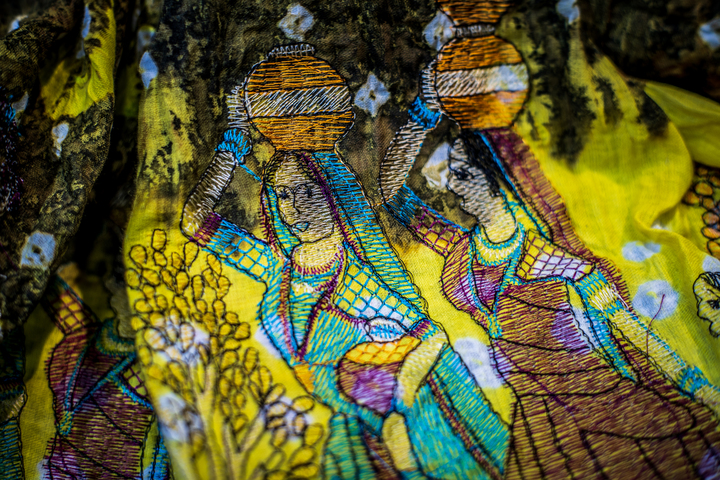On Tuesday, November 5, the students of history teacher Mike Clayton’s Elections & Political Parties PPP senior history seminar walked into their assigned voting stations as poll workers, fulfilling one of their many PPP requirements for this brand-new class centered in civic engagement, political history and the 2024 elections.
The class originated from a college elective Clayton took during an election year called Elections and Political Parties. “I just found…[that] as this college student, [it was] really rewarding to think about the [current] election, the history of elections,” he said. He decided this class would be perfect for the election season of 2024, this time grounding it in PPP opportunities for the students. “I was thinking about…this idea of [giving] teenagers an opportunity to become civically engaged,” Clayton said. To fulfill the PPP requirement, students engaged in local and federal political campaigns and worked as poll workers on election day.
Clayton’s class studied how election systems and voting rights have changed throughout the history of the United States. Clayton views them as an inspiration and a foundation for present-day activism. “Right now there are certain people who feel kind of stuck in this moment…” he said. “By looking at the past, we can see the ways in which people…create the change that they want to see, [especially] in terms of how people organize or build coalitions.”
With this mindset, Clayton assigned students to participate in any campaign they chose. Many students advocated for local issues in San Francisco. “A lot of them really found that rewarding [by finding] a hyper-specific thing that [they could] be involved in that will actually make a really obvious change in [their] community,” Clayton said.
On Election Day, students were required to work at the polls for a full shift. One student in this seminar, James Park ’25, found many connections to historical politics and elections during his fifteen-hour shift working at the polls. “Talking about past elections…is really important to understand democracy and understand what America was built on,” Park said.
Justin Ma ’25, another student in Clayton’s class, reflected on his rewarding poll working experience. He saw many voters struggling with language barriers or other difficulties, relating to long-standing voting rights issues that he studied in class. “[Many voters] used the verbal ballot machine rather than [voting] by hand because they physically couldn’t fill out a ballot,” he said.
Language barriers could also pose a problem, since many voters came to the polls only speaking Cantonese or Russian. “There were definitely people that…weren’t 100% proficient in English, but San Francisco has a few resources to help combat that. They have ballots in Chinese, Spanish and Filipino,” Ma said. He and many other students working at the polls noticed that many voters had trouble filling out the ballots, especially the options for the newer rank-choice voting, a complicated but equitable voting system for local elections.

photo by Juliana McDowell
Greta Samaha ’26 was also a poll worker on election day, and noticed the difficulties that voters faced filling the ballots out. Samaha, who isn’t a student in the Elections class, thinks that voter education should be more widespread, even for students who can’t vote yet but will make good use of the education in the future. “I think having classes like that would definitely be beneficial,” she said.
Clayton’s class also learned about the intricacies of campaigns today with the use of social media. Currently, fast-spreading news and social media play a large role in delivering campaign messages to the public. Since political polarization is increasing in the United States and incorrect information often spreads easily, news consumers must be wary of the messages they are absorbing. “Some people talk about the idea that we’ve moved from an age of information to an age of disinformation,” Clayton said.
When students come across an article while researching, Clayton encourages them to conduct research on its topic and source using a method called reading “horizontally.” “The idea [is] that instead of just reading a web page or an article from top down, you should open up new tabs in order to read ‘across’ [to] have a fuller understanding of the issue,” Clayton said.
Park noticed that his media literacy and polarization education made him feel more empathetic towards those with opposite political views. “I’ve been [watching] a variety of both left and right leaning videos, and [reading] a variety of news sources from different perspectives, so I can better understand what everyone considers when they’re thinking about politics,” he said. He thinks that being an informed voter should be a goal for every high school student. “I believe that Lick should provide resources on media literacy and skills to have healthy and productive dialogue [based on] multiple unbiased sources,” he said.
Ma emphasized the importance of learning more about politics in an ever-changing world using media literacy skills and keeping the complexities of voting in mind. Specifically, he noticed how San Francisco’s multitude of propositions can be daunting to engage with. “[I] learned that it’s really difficult to be fairly educated on different propositions…but I think it’s important,” he said. “As long as you read up on what each proposition is, and you fill out your ballot, then you’re fulfilling your responsibilities as a voter.”
Savannah Harris ’25 was also a student in Clayton’s Elections class. On the topic of the class’s curriculum, she found voter education and engaging with the media very valuable as a first-time voter this year. “It was super impactful,” she said. Even though she had never voted before, she felt prepared and even was able to explain California State Propositions to her parents. Most of all, “I had enough information to make informed decisions,” Harris said.






